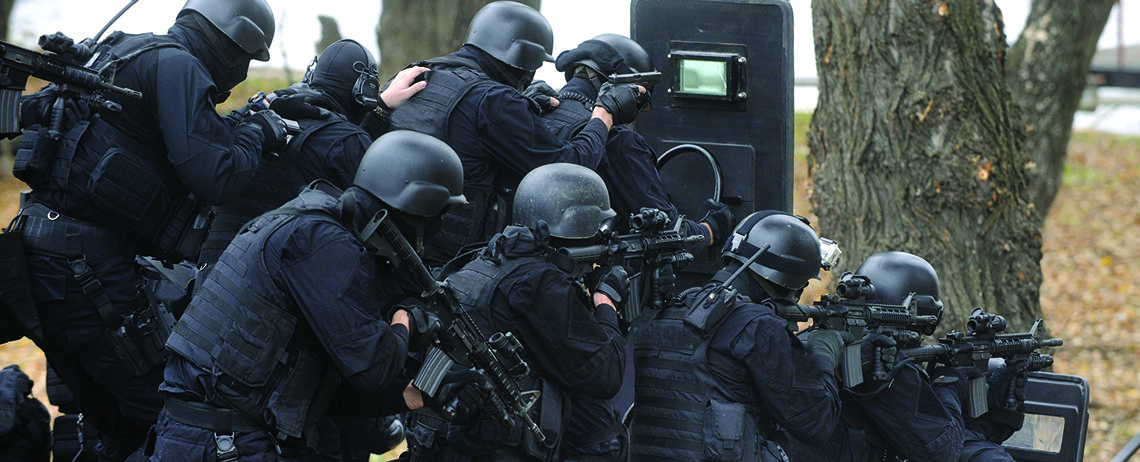Have an Active Shooter Plan in Place. It Could Save Your Life
SafetyCulture News | By | 9 Nov 2018 | 3 minute read

The death of 12 people at a Californian bar on Wednesday takes the number of mass shootings in America to 311 this year. As distasteful as it feels, people need to think about what their response plan would be, if it happened to them.
When Kristina Anderson’s Professor of French told the class to call 911 in response to gunshots in the hallway, Anderson and her classmates at Virginia Tech instinctively hid under their desks. Despite being shot three times in the back by Seung-Hui Cho, who claimed the lives of 32 others at the college before killing himself, Anderson survived the April 2007 mass shooting.
But staying put isn’t always the best plan. “The worst thing to do is hide under a desk,” says Greg Shaffer, a former FBI agent in the Hostage Rescue Team who is now head of risk management firm Shaffer Security Group. “The average distance of an active shooter from their target is two feet [about 61 centimetres]—and that is largely because people are hiding under desks. The hit rate of a shooter hitting a moving target is 4 per cent. If you are shot when moving, there is a 0.1 per cent chance of it being lethal.”
Decisiveness saves lives
In critical situations, human responses to fear are freeze, fight, or flight. “Freeze is the worst option,” says Shaffer, who uses real-life examples such as Anderson’s experience at Virginia Tech and the Pulse Nightclub shooting in Orlando, Florida, in which 49 people were killed in 2016, to teach what to do in active shooter situations. “If we educate people on what to do, that fear gets minimised and replaced with confidence. Confidence equals decisiveness in a critical incident, and decisiveness can save your life.”
“Thinking ‘it’ll never happen to me’ is not a security plan,” Shaffer says. “Statistics show there’s an active shooter event in the United States every three weeks—and of those, half occur in a workplace.”
That data, from 2014, doesn’t take in 2017’s 30 active shooter events—the most since the FBI started keeping records in 2000—which would make it more like one every two weeks.
Security expert Steve Cocco, a former manager at the FBI’s Joint Terrorism Task Force, says employers need to have this difficult conversation with their employees.
“There are ever more high-powered weapons available to civilians in US society and they can be purchased at low cost over the internet, both new or used,” Cocco says. “This fact, coupled with the generally vulnerable physical layout of offices, schools and shopping centres, makes it likely that workplace shootings will increase.”
Know the plan
Cocco says that an effective active shooter plan starts with an assessment of the workplace, including building access, parking areas, entry and exit doors as well as interior staircases.
“Every plan is unique, but they must all have some common elements, such as identification of escape routes and alternative routes, a detailed emergency-response plan, a crisis-management component,” Cocco says.
“Importantly, give clear guidance to employees about how to act and respond when law enforcement arrives so that officers do not mistake an innocent bystander for a threat. Each employee must have access to the plan and know his or her expected response and role.”
For workplaces where people are immobilised, such as hospitals and nursing homes, a different plan is required to allow people to self-defend in place, with locked doors, door frames of steel and concrete rooms.
In training employees on what to do in the case of an active shooter or more serious armed scenario, Shaffer disagrees with the US Department of Homeland Security’s mantra of “run, hide, fight”. He believes a better slogan is “avoid, deny access, defend”.
“If you can’t run, you need the ability to lock the door quickly and safely, but under duress, we lose our fine-motor skills, meaning you potentially can’t put a key in a door and turn it,” he says.
“You need to deny the shooter access, then look for improvised weapons. Break the leg off a chair, use a pair of scissors or grab a fire extinguisher. Letting it off in their face will freeze their eyeballs, then you can use the canister to hit them over the head.”
Shaffer says the most important message is that employees need to be armed with a good plan and be empowered to save themselves. “The average event lasts eight minutes [an FBI report says 70 percent last less than 5 minutes], while the average police response time is 12 minutes. Do the maths: the only one there to save you is yourself.”
Important Notice
The information contained in this article is general in nature and you should consider whether the information is appropriate to your specific needs. Legal and other matters referred to in this article are based on our interpretation of laws existing at the time and should not be relied on in place of professional advice. We are not responsible for the content of any site owned by a third party that may be linked to this article. SafetyCulture disclaims all liability (except for any liability which by law cannot be excluded) for any error, inaccuracy, or omission from the information contained in this article, any site linked to this article, and any loss or damage suffered by any person directly or indirectly through relying on this information.





